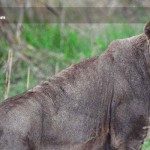5°30’-6°40’N/35°20’-36°00’E
Enter the cultural and natural hotspot of Omo National Park and Omo Valley for the experience of a lifetime. It boasts one of the best wildlife concentrations in the country, established in 1966. Elevation, on average is around 500m above sea level, but Mountain Maji reaches a height of 1,541m. Rainfall is close to 810mm per annum, and the main wet season is from March to November. Maximum temperature records can go as high as 40 degrees C in December and minimum temperatures from April to June are around 20 degrees C.
Location: 870km southwest of Addis Abeba, on the west bank of the Omo River in the South Omo Valley.
Size: 3,566sqkm.
Hours: 6:00am to 6:00pm.
When to Go: The best time is from December to February.
Things to See and Do: Visiting the various ethnic groups, wildlife viewing, and whitewater rafting can make any visit very adventurous. Mursi, Surma, Bodi, and Dizi live adjacent to the park. The park conserves one of the most diverse populations of mammalian species in Ethiopia. Wildlife includes waterbucks, bushbucks, elands, beisaoryxes, Burchell’s zebras, lelwel hartebeests, buffalos, tiangs (topises), giraffes, hippos, kudus, lions, and elephants. The Illilbai Hot Springs, located in the middle of the park, offer the opportunity to see diverse wildlife as they come to drink during the early mornings and evenings.
Getting There: Get a four-wheel drive, a good driver, and a local guide. The track from Jinka in the east to the edge of the Omo River is only accessible in the dry season (August to February). Another track, from Maji to Omo National Park in the west, is almost impassable and is almost only used by Omo National Park vehicles and a few other adventurous visiting groups.
Where to Stay and Eat: Camping in the park.
















